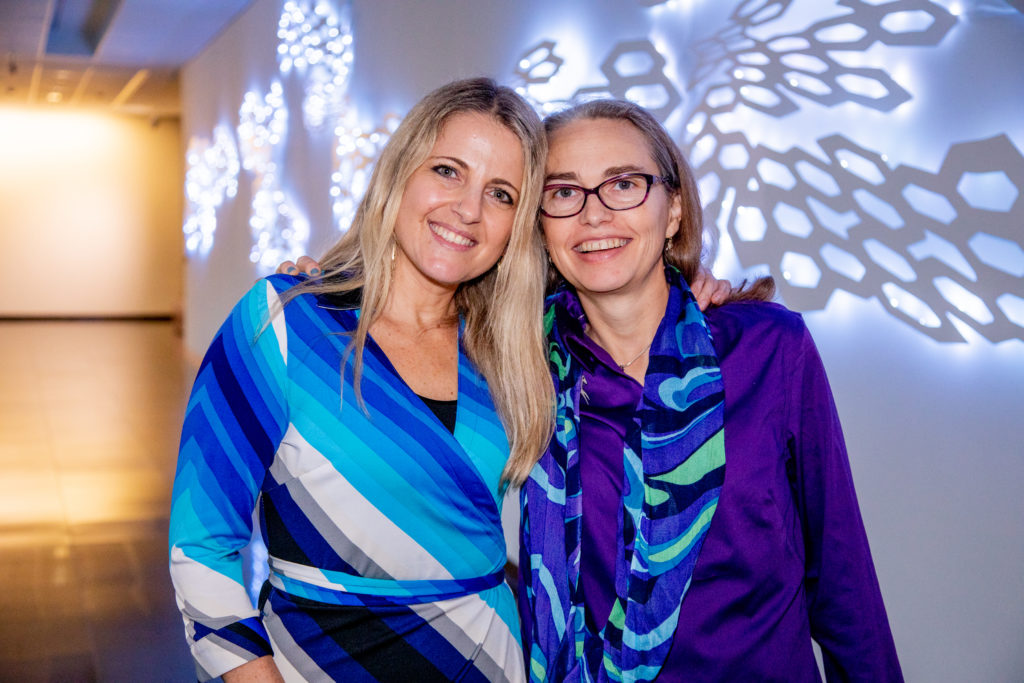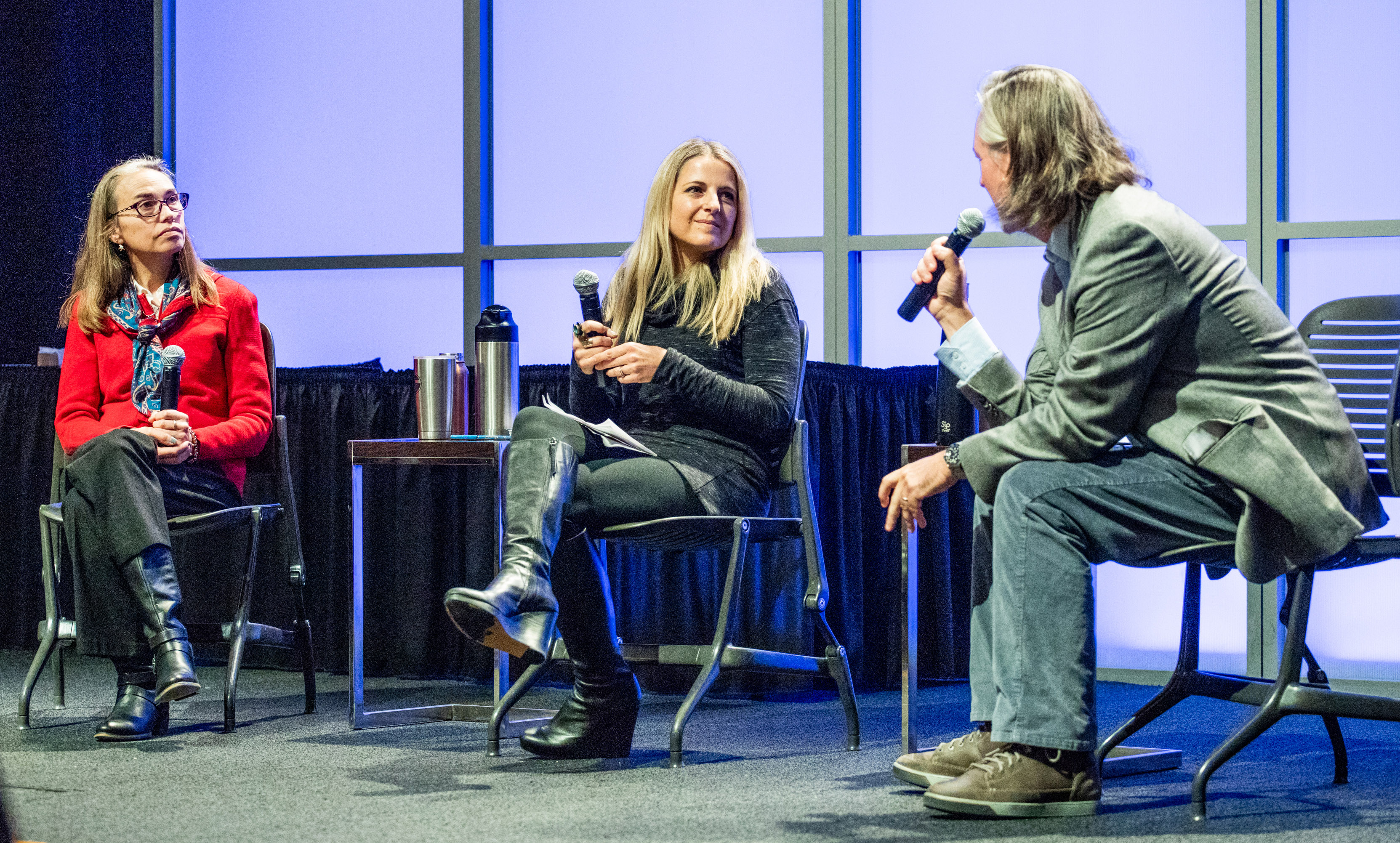For Samantha Joye and Rebecca Rutstein, the point where the arts, the sciences and the humanities meet is thousands of meters beneath the sea.
Joye, the Athletic Association Professor in Arts and Sciences in the marine sciences department at UGA, and Rutstein, an artist and the university’s third Delta Visiting Chair for Global Understanding, shared how they are working together to shine light on literal darkness during a lecture titled “Expeditions, Experiments and the Ocean: Arts and Sciences at Sea.”
“This connection allows us to use the beauty of the deep sea to captivate people’s imaginations,” Joye said. “I want to continue this because I think it is an exceptional way to engage the public in what we do.”
The Nov. 2 event, sponsored by the Willson Center for Humanities and Arts, was part of the fall 2018 Signature Lecture series and a plenary presentation of the Alliance for the Arts in Research Universities, or a2ru, conference.
Their collaboration began when they met at a National Academies workshop just a year ago. Their conversations about how art can convey the beauty of the deep sea sparked a collaboration.
For both of them, it was an elective class that changed their paths. Joye was studying to be a doctor and took a marine sciences class that helped her realize that while she loved medicine, she could do just as much to help people while studying the ocean. Rutstein, who majored in art, took an interest in geology after taking an elective in the subject and began incorporating geological themes into her pieces.
“It sparked a passion in me to shed light on these places and processes that are hidden from view through creating art,” Rutstein said.

Rutstein’s work inspired by descents to the ocean floor is currently on display at UGA. A 64-foot-long interactive sculptural installation made with laser cut steel and LED lights, and a large-scale, four-part painting installation can be seen at the Georgia Museum of Art, and a mural-sized banner is on display in the Lamar Dodd School of Art.
Later this month, Rutstein will join Joye and other scientists studying hydrothermal vents and the carbon-cycling processes occurring in Mexico’s Guaymas Basin in the Sea of Cortez. Rutstein will set up her studio on the ship and create new works inspired by the data they’re collecting in real time.
“It’s a collaboration of geology and biology and a very interdisciplinary project that lends itself beautifully to artistic rendition because it’s so varied and so delicate and so beautiful,” said Joye.
Rutstein and Joye will give a second presentation in March 2019.


